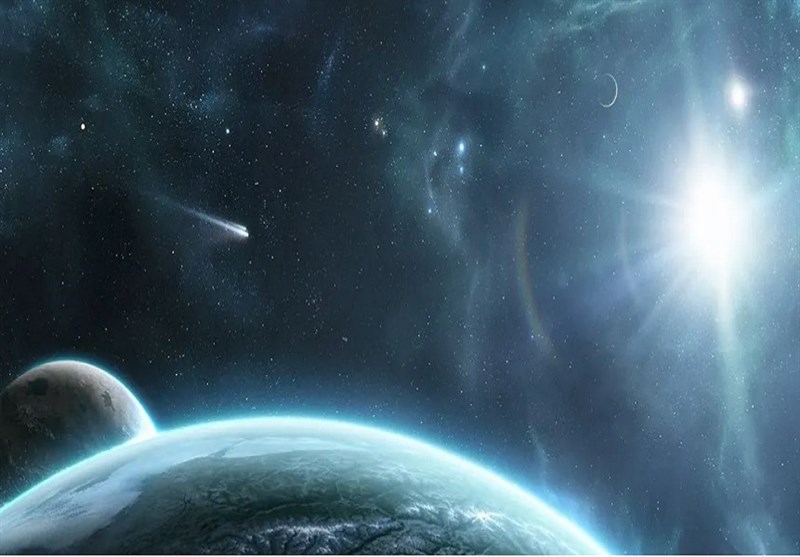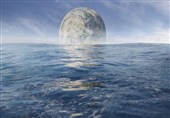Newly-Discovered Exoplanet Remarkably like Earth
TEHRAN (Tasnim) – The more we look out at the universe, the more it seems our home planet isn't as unique as we thought.
Recently, an international team of scientists announced the discovery of two new exoplanets that are each about 40 percent larger than Earth — and they say these distant worlds would make prime targets for the James Webb Space Telescope (JWST), in part because one of them may have a climate similar to Earth.
The two planets were discovered orbiting a star obliquely named LP 890-9, which is in the constellation Eridanus, about 105 lightyears from where you're reading this. The first planet, LP 890-9b, was initially detected by NASA's Transiting Exoplanet Survey Satellite (TESS) and completes an orbit around the star in less than three days.
Researchers, led by Laetitia Delrez, astrophysicist at the University of Liège, in Belgium, wanted to confirm the planet was really there and learn more about it. So they used ground telescopes, as opposed to TESS, which orbits Earth. They employed five other systems of telescopes, including SPECULOOS (shorthand for Search for habitable Planets EClipsing ULtra-cOOl Stars), a network of robotic telescopes being used to inventory terrestrial, rocky planets like our own and assess their potential for hosting life.
When the researchers aimed the SPECULOOS network at the same spot as TESS, they found an additional planet, this one named LP 890-9c (emphasis added). It's about the same size as b, but has an orbit of about 8.5 days. The discovery was published in the journal Astronomy & Astrophysics.
"Although this planet orbits very close to its star, at a distance about 10 times shorter than that of Mercury around our Sun, the amount of stellar irradiation it receives is still low," Francisco J. Pozuelos, a researcher at the Institute of Astrophysics of Andalusia and one of the main co-authors of the paper, said in a statement. This could "allow the presence of liquid water on the planet's surface, provided it has a sufficient atmosphere," he said.
The star these newly discovered exoplanets orbit is about 6.5 times smaller than the Sun and LP 890-9 has a surface temperature about half that of our star. "This explains why LP 890-9c, despite being much closer to its star than the Earth is to the Sun, could still have conditions that are suitable for life," Pozuelos said.
LP 890-9 is the second coolest star discovered to have its own planetary system. The first coolest star is TRAPPIST-1, a red dwarf star in the constellation Aquarius, that made headlines in 2017 because it was the first star discovered to have Earth-like planets orbiting in the habitable zone, meaning the region in which scientists believe life as we know it might form and survive. Likewise, this zone is just the right distance from the star to allow for liquid water, believed to be a requirement for life in the universe.
That even more planets with Earth-like conditions exist bodes well for the continued search for extraterrestrial life. All the more reason to point the James Webb Space Telescope (JWST), the most powerful interstellar camera ever developed, in the direction of the most likely habitable places.
It's not easy spotting exoplanets — which, unlike stars, don't produce their own light. Hence, scientists employ several search techniques, such as detecting the shadows planets make when they pass in front of their suns, or checking for tiny gravitational tugs that planets make on stars. Yes, even though planets are tiny compared to stars, they do have some gravitational influence on their much larger "parent" and even these small fluxes can be detected by scientists down here.
It requires a lot of data crunching to fully validate that a new exoplanet has actually been found. You also have to account for the light from other stars that can contaminate the information a telescope receives. To make sure they were really seeing another world, the scientists used a few different methods to make sure their observations were accurate, such as plugging their stats into a software called Triceratops.
The JWST has already been busy taking a peek at exoplanets. Earlier this month, NASA announced the first-ever direct images of a distant world taken by JWST. The planet in question, HIP 65426 b, is about six to 12 times the mass of Jupiter, according to NASA. That makes it a gas giant that lacks a rocky surface. So it's very unlikely aliens could be living there.
Maybe JWST should give astronomers a closer look at LP 890-9b and LP 890-9c next.
"The discovery of the remarkable LP 890-9 system presented in this work offers another rare opportunity to study temperate terrestrial planets around our smallest and coolest neighbors," the authors who found these two Earth-like worlds concluded.






